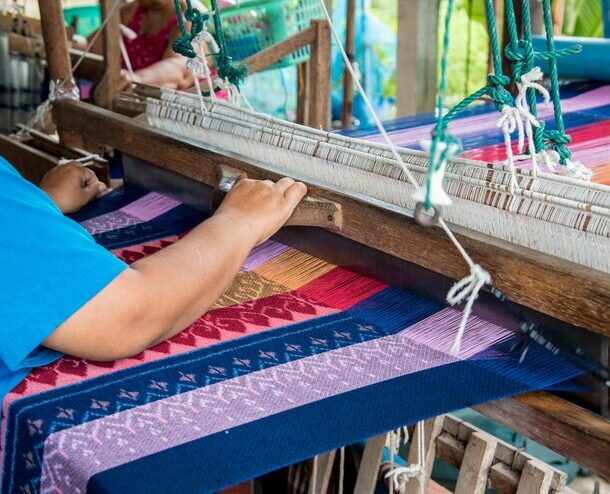
In Full Bloom
“Orchids for me! Thank you!” you might not be surprised to hear such an expression of sheer delight from many visitors to the Land of Smiles. In Thailand, guests are traditionally welcomed with orchids; whether in a restaurant, boat cruise, or even on a flight, it’s another gesture to embrace and appreciate visitors.
With more than 1,000 species of orchids grown in the Kingdom of Thailand, they are not only the flower of choice but also the Kingdom’s national flower. There are innumerable orchid farms in Thailand, where the growing regions extend from Chiang Mai in the north to Phuket and Bangkok.
On a global scale, Thailand has proven to be an expert in orchid farming and is one of the leading countries in Asia and the world in orchid export. Orchid farming is a multimillion-dollar business in the Kingdom of Thailand. Renowned celebrities worldwide choose to have their orchids especially handpicked from the Kingdom of Thailand. Jay-Z and Beyoncé Knowles ordered more than 60,000 orchids from Thailand to decorate their reception for their unique and celebrated multi-million-dollar wedding.
With so much value and beauty, it is not surprising that orchids are truly special. The season for growing orchids in Thailand usually begins in January and lasts as long as the cool weather permits, until late August. Orchids are grown in many farms around the Kingdom of Thailand, even in warm and humid Bangkok, where constant exposure to hydrant conditions, sunlight, and other needed nutrients provide the ultimate growth setting.
Chiang Mai and Chiang Rai are known for their mountainous beauty, lush green fields, and abundant orchid farms. In Chiang Mai, orchids, commonly called Gluay Mhai, are displayed everywhere, in hotel concierges, restaurants, and even on residential gardens and patios. Different species in various colours ranging from red, orange, yellow, pink, blue, purple, and even white are grown. Purple and violet blooms are amongst the most popular, white blooms are unique because of their scarcity in the wild. The bountiful orchid farms in Chiang Mai will supply you with your bloom of choice.
Orchid Pollination
A single orchid seed capsule may contain as many as two million tiny seeds, which the wind can carry far and wide. To produce seeds, orchids are pollinated by insects. What lures insects to them, you might wonder? Orchids have no pollen to offer; their favorite enticements are beauty, scent, and disguise.
Certain species of orchids do not like bees and will produce a repugnant odor to prevent bees from pollinating them. In other instances, specific species are pollinated by flies and will release a strong scent to attract them. Being such a complex flower, orchids are shrewd and cunning at the same time; in some cases, they will only allow pollination by specific types of insects.
This makes the process of finding and breeding the perfect bloom more challenging. So the question is, how can you find the right colour combination of orchids without a repugnant odor? This is where Thailand’s expert horticulturists come in. Their task is to ensure that cross-pollination takes place easily by removing the hurdles of insect pollination. With a hefty measure of persistence and luck, they can control the cross-pollination process for a brand new orchid to spring in full bloom.
Chiang Mai’s Orchid Farms
Visitors to Chiang Mai can readily take a morning or afternoon trip to an orchid farm near Chiang Mai’s city center and experience the breeding process. Sai Nam Phueng orchid farm is Chiang Mai’s largest; others include Mae Rim orchid farm and Suan Bua Mae Sa. Once there, you will have the opportunity to admire various species with distinctive colours. Experienced farmers will also advise you on breeding orchids and provide helpful tips on acclimating them.
Orchids do not prefer direct exposure to sunlight, cold drafts, or vents; their optimum growing conditions are in a natural environment. Although they prefer humidity and moisture, they have a low tolerance for constant watering, which can cause rot and eventually kill them. In fact, certain species of orchids can even grow in the wild and are found in deserts, swamps, and mountain peaks; some even choose a cactus or a mangrove root as a host. But orchids are not parasites; they need the tree for support so that their aerial roots can absorb atmospheric moisture.
When they were first discovered in the wild, orchids were threatened by changing environments and slash-and-burn agriculture. Ecologists and horticulturists were so determined to bring rare species into controlled conditions. When the hunt for orchids began, jungles were scoured for exceptional blooms, many of which did not survive the long sea journeys to Europe; those that did fetched high prices.
History has it that a sum of 1,150 pounds, which was equivalent to $100,000 US dollars, was paid at an auction in London in 1906 for just one specimen. Although orchids might not fetch the same price today, experienced horticulturists and collectors are willing to pay a hefty sum for a new hybrid.
Whether it’s their beautiful subtle colorful hues or their striking colour combinations, orchids continue to charm and captivate tourists and locals alike in the Land of Smiles!



